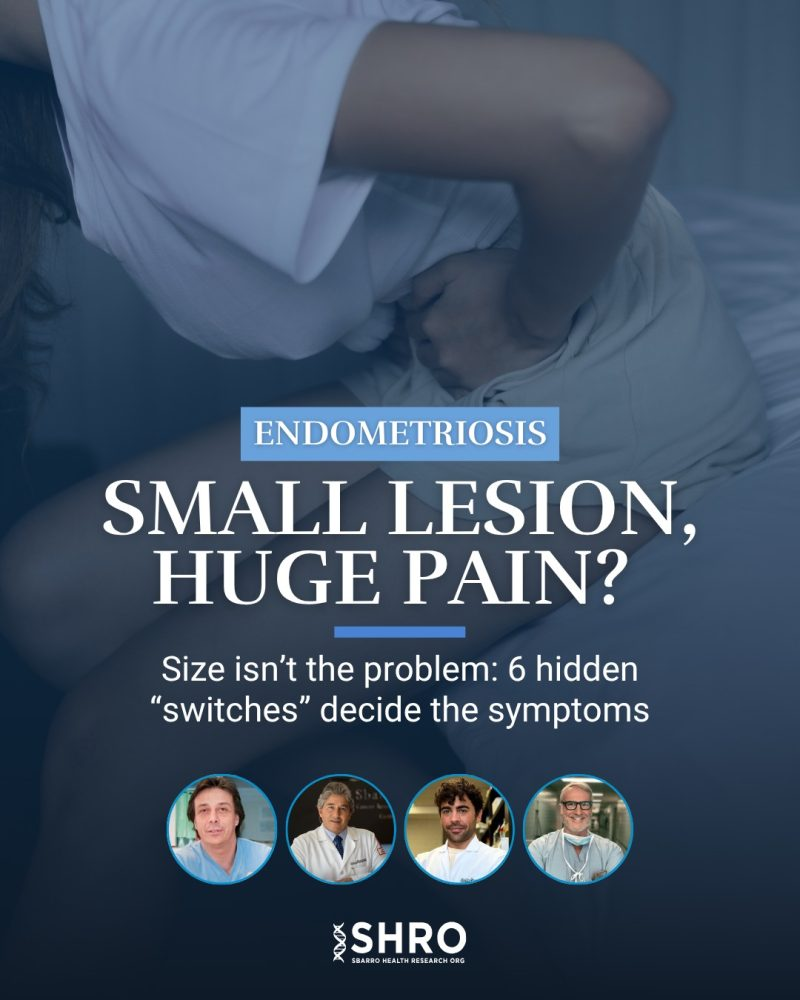Endometriosis Not Only One Disease: Research Maps Six Cancer-Like “Switches” Shaping Each Woman’s Symptoms
- shromarketing
- Jul 25
- 2 min read

PHILADELPHIA - Researchers are asking why some patients with tiny endometriosis spots endure crippling pain while others with large lesions barely notice. The answer may be revealed by different molecular “switches” that flip on inside their tissue, according to a new analysis from an international team of scientists working with the Sbarro Health Research Organization (SHRO).
Endometriosis affects more than 190 million people worldwide and is often treated as a single condition. But a new paper published in Annals of Research in Oncology suggests that the disorder actually behaves like several distinct diseases, each driven by a mix of six hallmark pathways also seen in cancer, such as runaway growth signals and chronic inflammation. The findings help explain why one woman may cope with mild pain while another needs repeated surgeries, and it lays out a translational roadmap for faster, better-targeted therapies.
“Endometriosis can turn on any combination of six major pathways we normally associate with cancer,” says Dr. Canio Martinelli, M.D., OBGYN, lead of the Women's Health Research and Innovation Program at SHRO and first author of the paper. “The pattern of switches, not the size of the lesions, drives how the disease looks and feels for each patient.”
“If we keep treating endometriosis as one disorder, we’ll keep seeing delayed diagnoses and hit-or-miss therapies,” says Dr. Antonio Giordano, M.D., Ph.D., President and Founder of SHRO and Professor at Temple University. Calling the work a “wake-up call,” Giordano continues, saying, “the average time to diagnose endometriosis and begin treatment is now taking seven years. Borrowing from the precision-medicine playbook we use to treat cancer could change that for patients with endometriosis.”
“Mapping these pathways lets surgeons plan with the same level of precision we do in oncology,” adds co-author Prof Alfredo Ercoli, Director of the Obstetrics and Gynecology Unit at University Hospital of Messina. “This opens the door to predict which lesions will invade deeply and which can be managed conservatively,” Ercoli says.
Speaking from a fertility-surgery perspective, co-author Dr. Andrea Vidali notes, “Seeing endometriosis as several distinct conditions helps patients understand why treatments differ and pushes us toward rapid blood-test diagnostics that could end years of uncertainty.”
“Two patients both labelled ‘stage III’ often need very different approaches,” adds Dr. Francesco Di Chiara, surgeon at John Radcliff Hospital in the United Kingdom, and co-author of the paper. “Now we can point to the biology behind those differences.”
The authors outline a phase-by-phase translational strategy—from lab models to small “phase 0” trials—to convert the pathway insights into blood tests and targeted, non-hormonal drugs.


Comments